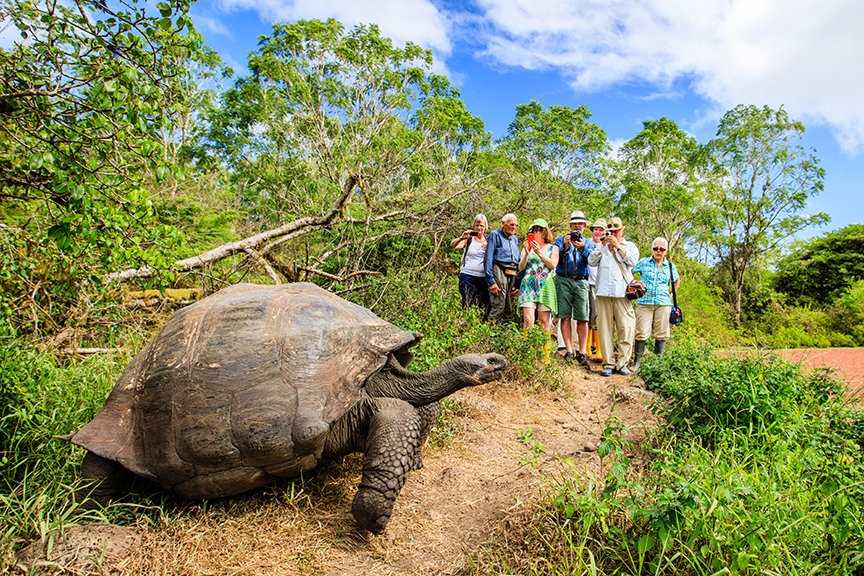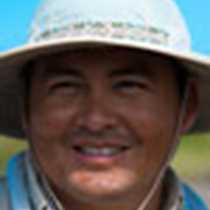Today our natural quest became more colorful and vibrant. We awoke this morning to a mysterious and intriguing fog—this is due to the inversion layer that results from differences in the temperatures of the ocean and the air. This is why the Galapagos Islands have been referred to as the Enchanted Islands, as they seem to disappear at times due to this heavy fog. After breakfast, we disembarked to explore Santa Cruz, an island with an area of 986 square kilometers (381 sq. mi) and a maximum altitude of ~ 900 meters (3,000 ft).
Situated in the center of the archipelago, Santa Cruz is the second largest island and its main village Puerto Ayora is the most populated urban center in the archipelago. On Santa Cruz there are some small villages, whose inhabitants work in agriculture and cattle raising. Our first outing was a visit to the vibrant town of Puerto Ayora and the National Park Breeding Center. The laidback people of the town interacted with us and shared anecdotes about their lifestyle, and recounted stories of when this town was smaller. We visited the Fausto Llerena Breeding Center for giant tortoises, which has been functioning since 1960 researching the connecting factors to the low reproductive success of the different population of Galapagos giant tortoises. Our walk through the different corrals reminded us of the need for preserving these incredible creatures, and reinforced the conservation message among all of us.
After our visit to the Breeding Center, we headed back to town to immerse ourselves in the Galapageños’ culture. The main economy of this town is tourism, as well as agriculture and fishing. To complete our morning outing, we headed to the highlands to have lunch, with a momentary stop at el Trapiche along the way. In this farm, Adriano who owns the place narrated and described us the story of his life back in early 50s, when he and his family migrated to Santa Cruz Island. He started his new life making panela and aguardiente out of sugarcane juice, back when electricity was not available in the highlands. Nowadays, he also produces cheese, coffee and cacao. We all enjoy the delicacies made by his family.
After lunch we continued our natural quest in the plains of the island. We loaded up our buses and headed to the migration route of the representative and fascinating giant tortoises. Several tortoises were sighted in the manzanillo and acacia forest. Similarly, land birds such as finches, mockingbirds and flycatchers made our outing very pleasant. Our journey ended back on town and where a spectacular sunset painted the cliff of Academy Bay, as our Zodiacs returned us to the National Geographic Endeavour.







